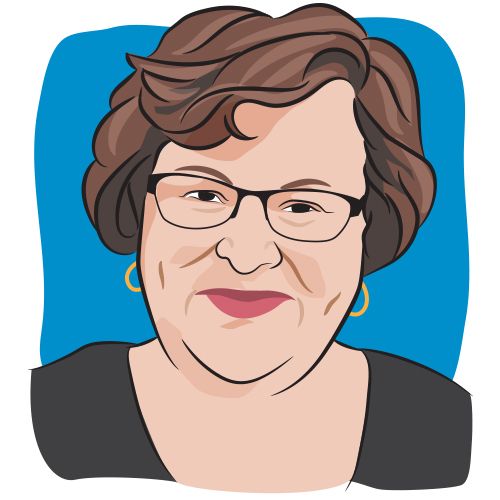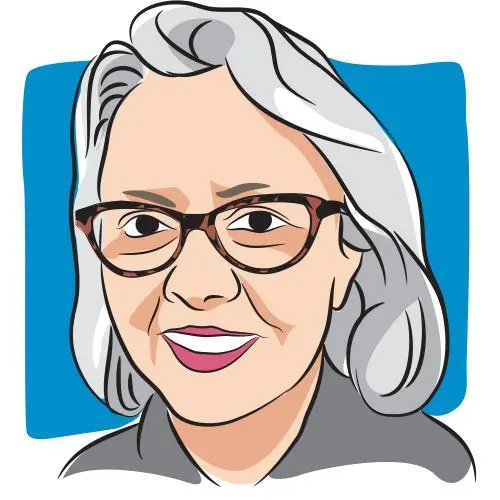Article
Expert Discusses Upcoming Agents to Treat Follicular Lymphoma
Author(s):
John P. Leonard, M.D. spoke with CURE about some upcoming advancements in the treatment of follicular lymphoma.
Therapies must be carefully considered when treating patients with follicular lymphoma, the most common type of non-Hodgkin lymphoma, says John P. Leonard, M.D., medical oncology, at Weill Cornell Medicine and New York Presbyterian Hospital.
“When patients relapse after initial therapy, the key factors in choosing a treatment include the time from first therapy, the time to reoccurrence, how sick they are, their age and what they need in terms of symptom relief at that time,” says Leonard.
Standard treatment options include single-agent Rituxan (rituximab) and chemotherapy with Rituxan. However, a number of new approaches for indolent lymphoma and more are on the horizon, Leonard says.
What upcoming treatment options for indolent lymphoma do you see the most potential for?
In an interview with CURE, Leonard discusses the potential for Revlimid (lenalidomide), Zydelig (idelalisib) and Imbruvica (ibrutinib) in follicular lymphoma, possible combination therapies and challenges that remain in the treatment of the disease.There has been some recent data with Revlimid, which is active in follicular lymphoma both alone and combination with Rituxan. There is also Zydelig, a PI3 kinase inhibitor that is FDA approved for refractory follicular lymphoma, and the BTK inhibitor Imbruvica is also active and approved in chronic lymphocytic leukemia (CLL) and mantle cell lymphoma.
What role do you see Revlimid having for the treatment of follicular lymphoma?
There is also the novel approach of venetoclax, which is in clinical trials for follicular lymphoma. In addition, radioimmunotherapy, which has been around for a period of time, and autologous stem cell transplant, which is appropriate for some patients, are other options.We recently published a paper in the Journal of Clinical Oncology that looked at Rituxan relapse in follicular lymphoma. The overall response rate with single-agent Revlimid was approximately 45 percent and the response duration was about one year. When you add Rituxan to that, the response rate went up to 75 percent, and durability was about two years.
What is the safety profile of Revlimid?
Can you discuss the potential for Imbruvica and Zydelig in follicular lymphoma?
There is an ongoing randomized study known as the AUGMENT trial (NCT01938001), which is looking at single-agent Rituxan versus Rituxan plus Revlimid in recurrent indolent follicular lymphoma and other indolent subtypes. This will help us really determine what the role of Revlimid is versus single-agent Rituxan. Revlimid is generally well tolerated. Patients can have some fatigue, occasional rash and occasional thrombosis. People are usually familiar with dealing with these symptoms in myeloma and other places where Revlimid is approved. Most of these patients tolerate it well, can function and go to work, and have an overall good quality of life while on treatment.Zydelig was FDA approved in Rituxan-refractory indolent lymphoma, including follicular lymphoma, in a study of 125 patients who had four prior regimens. The overall response rate was around 54 percent and durability was about one year. The main side effects to watch for with this agent are liver enzyme abnormality and colitis.
Are there any additional trials that you are interested in?
What are the biggest challenges that remain in the treatment of follicular lymphoma?
Imbruvica, which is approved in CLL and mantle cell lymphoma seemingly has a lower response rate, but is active in follicular lymphoma. The toxicity profile is very similar to what people are familiar with in CLL and mantle cell lymphoma.There are a number of trials looking at standard therapy with a new drug, such as bendamustine-Rituxan with Zydelig, Imbruvica, or a BCL-2 inhibitor, such as venetoclax. There are also studies looking at novel anti-CD20 antibodies. Those are all moving through the system. We need to determine if they are better with regard to overall survival or are just better with regard to progression-free survival, if at all. Also, what are the effects on quality of life? If you are making people live longer, then you need to also try to improve their quality of life. Accurately measuring that is important.One thing to keep in mind is that transformation can occur into an aggressive subtype. We suspect this because of high standardized uptake value on a PET scan or high lactate dehydrogenase, so we should do a biopsy to look for transformation.
Recent data have shown that in patients with follicular lymphoma who progress within two years of initial therapy, which is about 20 percent, have an unfavorable median overall survival of about five years. Therefore, that two-year mark is becoming important. Patients that take longer than two years to progress have more sensitive disease; these patients are more likely to die not of their disease, but with their disease. They have a lot of options. However, that 20 percent of patients who progress in two years from their initial therapy are people who we need to think about more carefully, because they are not going to do as well long-term. We need to be able to identify those early progressers.




